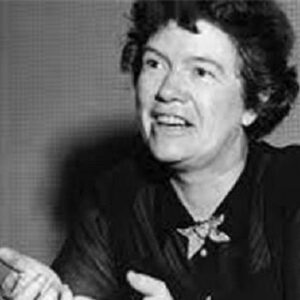Margaret Mead was an anthropologist from the United States, best known for her research and writings on cultural anthropology. She was a religious and feminist woman with an insatiable curiosity about human behavior and the underlying causes of human behavior. She developed an early interest in human behavior as a child. She was profoundly influenced by her grandmother, a child psychologist who taught her to observe the behavior of younger children in order to deduce the motivations for their actions. Margaret was a well-educated and accomplished woman who possessed a thorough understanding of her field of study. Her primary objective was to learn about human nature and the factors that influenced human behavior. She made a significant contribution to psychoanalytic theory development by emphasizing the role of culture in personality development. She advanced a theory about human evolution that she believed was inextricably linked to their social and cultural backgrounds.
Childhood & Adolescence
She was born in Philadelphia, Pennsylvania on December 16, 1901, to professor Edward Sherwood Mead and sociologist Emily Fogg Mead. She was the eldest of the Mead family’s five children—four sisters and one brother.
Her grandmother, who is a child psychologist, was instrumental in her upbringing. She urged her to begin observing children’s behavior and delving into the reasons for their actions at a young age.
Due to the family’s frequent relocations, she received the majority of her education at home. She received six years of formal education, but the majority of her knowledge came from family members.
She enrolled at DePauw University in 1919, spent a year there, and then transferred to Barnard College, where she graduated in 1923.
In 1924, she graduated from Columbia University with a master’s degree after studying with Franz Boas and Dr. Ruth Benedict. She embarked on an expedition to Samoa in 1925. In 1929, she earned a Ph. D. from Columbia University.
Career of Margaret
In 1925, she traveled to Samoa on a field trip to study adolescent girls’ lives. She discovered that young Samoan girls did not face the same tensions as American and European teenagers, and she investigated why. After her expedition, she published ‘Coming of Age in Samoa’ in 1928.
In 1928, she embarked on another expedition to New Guinea to conduct research on young children’s thought.
Following her expedition to New Guinea, she published ‘Growing Up in New Guinea’ (1930), which details the social and cultural factors that shaped their individual character.
Her later works included ‘Male and Female’ (1949) and ‘Growth and Culture’ (1951), in which she argued that cultural conditioning, rather than genetic factors, shaped personality characteristics.
From 1954 to 1978, she worked as an adjunct professor at The New School and Columbia University. From 1968 to 1970, she taught anthropology and served as chair of the Division of Social Sciences at Fordham University’s Lincoln Center campus.
She spent the majority of her life at New York City’s American Museum of Natural History. She served as assistant curator from 1926 to 1942, associate curator from 1942 to 1964, curator of ethnology from 1964 to 1969, and curator emeritus from 1969 to 1978.
Significant Works of Margaret
She was best known as an anthropologist for her research on Oceania’s illiterate peoples. She examined them from a variety of perspectives—natural, cultural, and sexual behavior—and made significant contributions to psychological research.
Additionally, she is renowned for her insight into social issues such as women’s rights, child rearing, sexual morality, population control, environmental pollution, and world hunger.
Awards and Accomplishments
In 1948, she was elected to the American Academy of Arts and Sciences as a Fellow. UNESCO awarded her the ‘Kalinga Prize for the Popularization of Science’ in 1970. In 1979, she received the Presidential Medal of Freedom posthumously.
Personal History and Legacies
In 1923, she married Luther Cressman, an anthropologist and former American theology student. In 1928, they divorced.
In 1928, she married Reo Fortune, an anthropologist from New Zealand who is best known for his ‘Fortunate Number’ theory. In 1935, they divorced.
In 1936, she married Gregory Bateson, a British anthropologist. They had a daughter, Mary Catherine Bateson, who followed in her father’s footsteps and became an anthropologist as well. In 1950, they divorced.
Apart from her marriages, she was also close with Dr. Ruth Benedict. Margaret’s daughter Mary describes the relationship as partially sexual in her memoir, though Margaret herself never confirmed this.
She spent her final days with Rhoda Metraux, an anthropologist, and letters between them were published in 2006, indicating a romantic relationship. On November 15, 1978, she died of pancreatic cancer.
Estimated Net Worth
Margaret is one of the wealthiest anthropologists and is ranked among the most popular. Margaret Mead’s net worth is estimated to be between $1 and $5 million, based on our analysis of Wikipedia, Forbes, and Business Insider.


